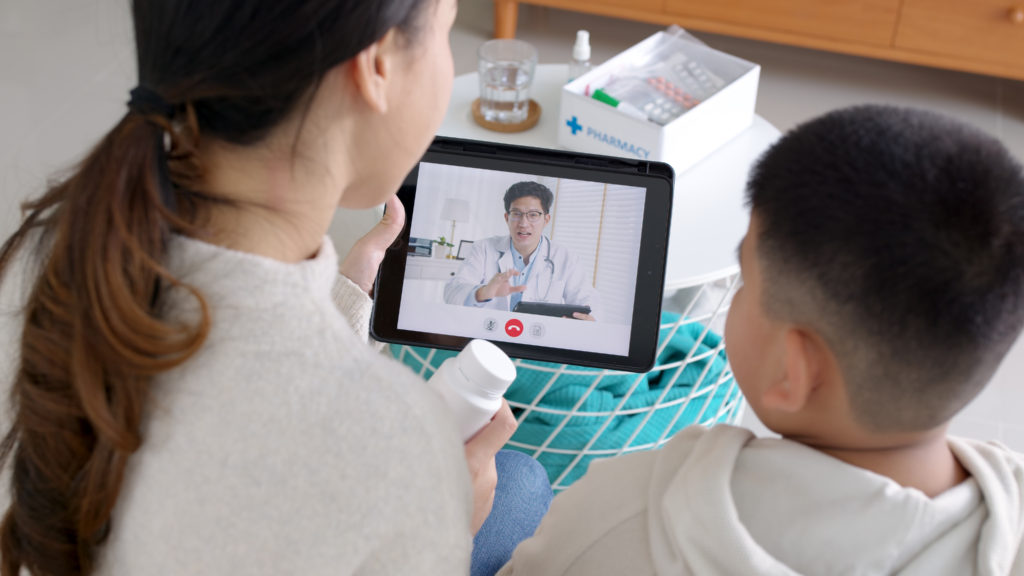The past two years have been full of change, growth and learning as health care professionals, clinics and medical infrastructures quickly adapted to meet the growing demand for telehealth. Along the way, VTN has been hard at work to promote and enhance telehealth offerings across the commonwealth. Part of that work included a multipronged statewide research project that will help inform the future of telehealth in Virginia.
Research Methodology and Background
During the fall of 2021, our team conducted a series of surveys and informational interviews to understand how health care professionals’ use of telehealth changed during the pandemic and their needs and pain points. An initial 24-question survey was distributed to Virginia’s licensed healthcare professionals in partnership with more than 20 medical associations and the Virginia Department of Health. It received 9,257 responses, the majority from behavioral and mental health providers (56.2%).
An in-depth, follow-up survey was sent to respondents who opted in, segmented for behavioral and mental health care professionals and “all other” health care providers. A total of 574 behavioral and mental health professionals and 147 medical professionals responded to this survey.
A Summary of the Initial Findings
Of more than 9,200 responses, VTN found there was an overwhelming adoption of telemedicine: three in four practitioners (74.7%) indicated they currently are employing telehealth in their practices. Almost 60 percent said they plan to increase their use of remote services in the future.
The initial survey also found that support for telehealth was even higher than the percentage of health care practitioners who are using it. More than nine in 10 (91.2%) agreed that telemedicine allowed them to address patient-care barriers posed by the pandemic. Among those who are not employing telehealth, nearly half (45.5%) said the platform was not compatible with their practice area.
Respondents also pointed to other benefits of telemedicine. More than half (56%) of the practitioners surveyed agreed that telehealth enabled them to take on new patients beyond their local community, underscoring the capacity for health care providers to serve patients in historically underserved communities. The virtual-care options also allowed practices to enhance care coordination for their patients (63.1%) and see more patients (67%).
There is Work to Be Done
While VTN was thrilled to hear the positive response to adopting telehealth, many providers, free clinics and counselors shared the challenges they face.
Access to Broadband
In parts of rural Virginia and underserved communities, broadband remains one of the biggest barriers to telehealth access.
One respondent shared, “Broadband is a huge issue we experience, especially being in a rural part of Virginia, for both our patients and providers. I know this is a current effort, but it’s important in creating that access to care for our patients who are using their cell minutes and data for virtual appointments.”
Access to affordable tools and technology
For providers to be able to care for patients with chronic diseases via telehealth, patients need access to at-home remote patient monitoring tools, many of which can be expensive if not covered by insurance.
Another respondent told us, “Some of the equipment needed for remote monitoring for some of our patients is expensive and difficult to obtain. Many of our patients with pre-existing conditions like hypertension and diabetes need blood pressure cuffs and other tools to help monitor blood oxygen levels, etc.”
Telehealth Etiquette Education
While the research project provided plenty of insights into the kinds of education and resources providers need to be able to conduct virtual visits efficiently and effectively, conversations with providers revealed the education that patients need, too. Interviewees shared:
- “There is a big need for patient education around telehealth including how to use technology, proper etiquette during virtual appointment etiquette, etc.”
- “For behavioral health appointments, many of my clients get easily distracted during virtual appointments.”
- “We come across digital literacy issues with our patients.”
Looking ahead, the future of telehealth relies on actions made by the General Assembly. In the meantime, VTN will leverage the data collected into a strategy for the commonwealth that increases the engagement of telehealth stakeholders.

